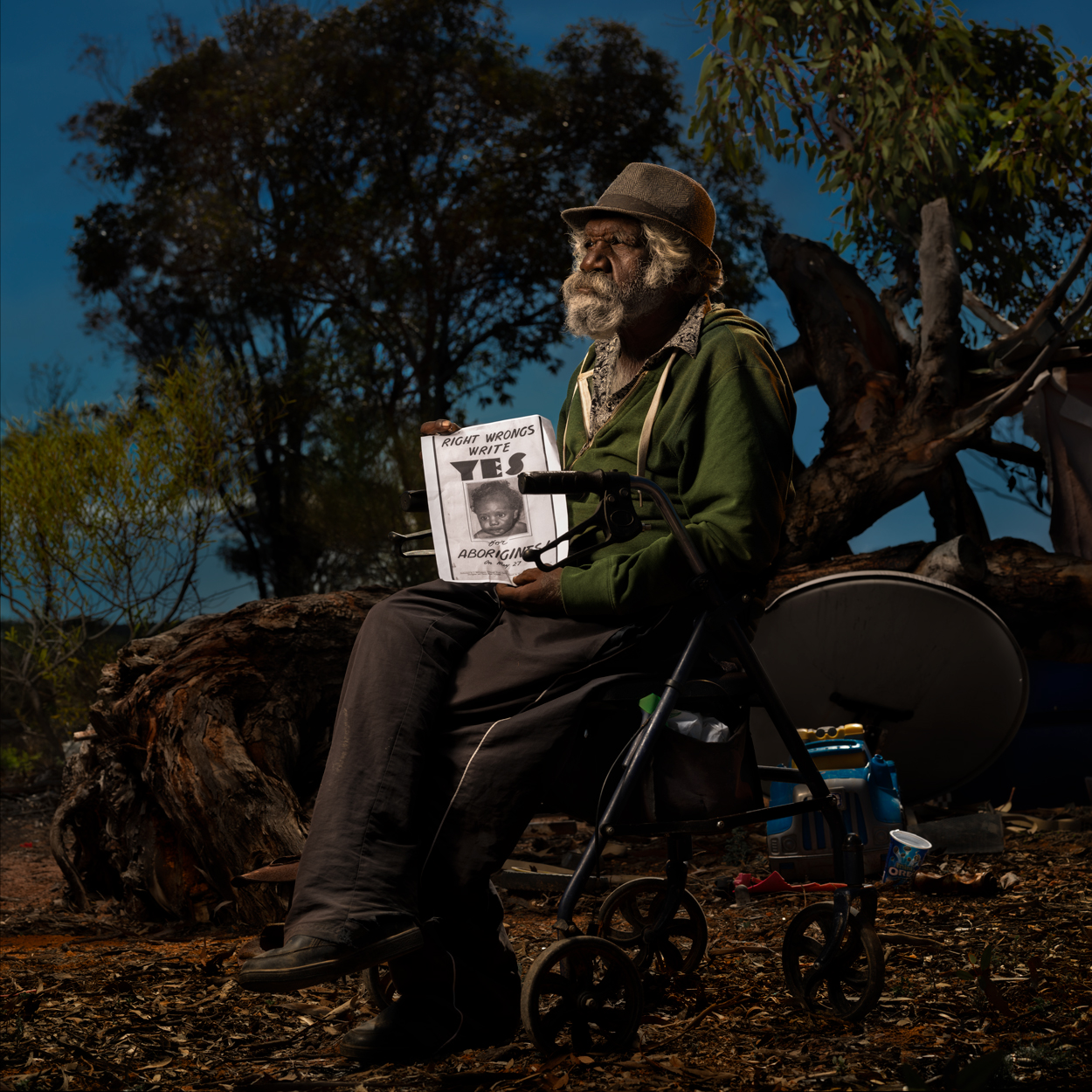
The 1967 Referendum asked the Australian public to vote on whether or not they would accept
amendments to Section.51 and Section.127 of the Australian Constitution. With 90.77% of
the public voting ‘yes’, the Referendum has been identified as “one of the most successful
national campaigns in Australia’s history.”An influential component of this campaign was the
use of posters featuring the faces of Aboriginal children, along with the slogan: ‘Right Wrongs,
Write Yes for Aborigines! on 27 May.’These posters were created and distributed by The
Federal Council for the Advancement of Aborigines and Torres Strait Islanders (FCAATSI),
and have since become symbolic and historical records of the Referendum and advocacy
associated with it.
Albie Hunt (Dunjiba) was one of the children featured in the iconic posters. Hunt’s
relationship with the Referendum then, is twofold and unique.
THE PORTRAIT
Laslett’s portrait refuses separation of collective and individual story: the work demands the
viewer take pause and consider the relationship between event (the 1967 Referendum) and
individual (Hunt).
As a baby, Hunt was taken from his family and transported 800 kms from Dunjiba to the
Umeewarra Mission, located just outside of Port Augusta, South Australia. It is unknown how
his image came to be used in the Referendum posters, but we do know the photograph was
taken at Umeewarra Mission. Over 40 years later, Laslett photographs Hunt in the same
place.
Hunt does not face the camera, but he is meeting our gaze: holding the campaign poster in
his hands. Accordingly, time ceases to be linear within the world of this image: history and the
present day co-exist, uneasily. This tension is intentional: as it is within these multiple
juxtapositions Laslett and Hunt undermine our capacity to deny the myth of a singular
narrative. We are made to bear witness and in doing so, recognize our own position in the
entanglement of injustices that have, and continue to, constitute the socio-political and legal
infrastructure of Australia.
Writing: Jennifer Eadie 2024